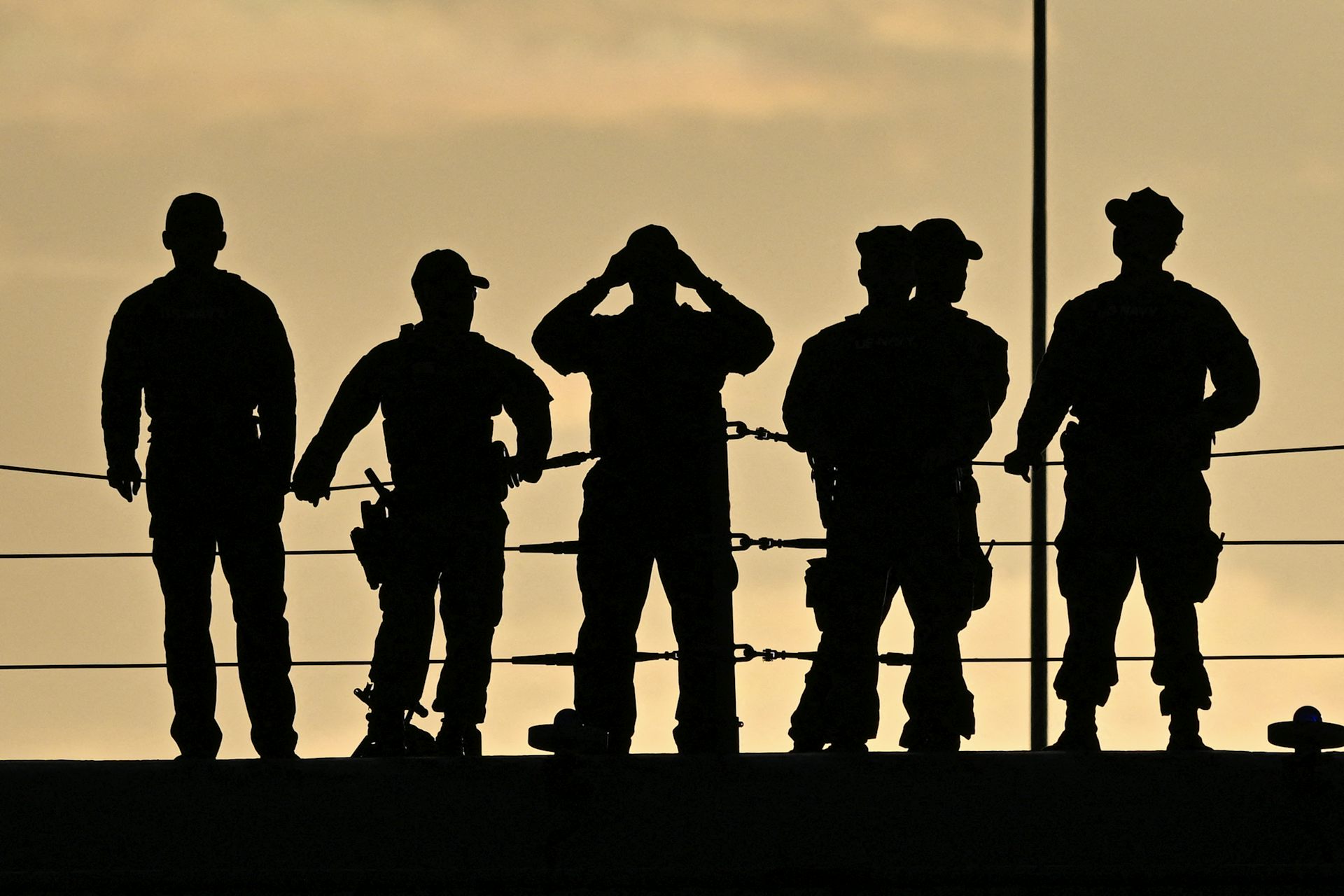Last of the giants: What killed off Madagascar's megafauna a thousand years ago?
A series of new studies sheds light on the population crash and extinction of the giant birds, lemurs and more that roamed the island until around AD 700-1000.
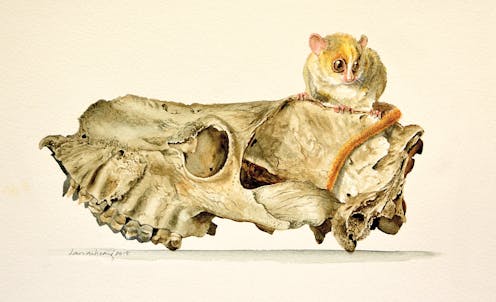
Giant 10-foot-tall elephant birds, with eggs eight times larger than an ostrich’s. Sloth lemurs bigger than a panda, weighing in at 350 pounds. A puma-like predator called the giant fosa.
They sound like characters in a child’s fantasy book, but along with dozens of other species, they once really roamed the landscape of Madagascar. Then, after millions of years of evolution in the middle of the Indian Ocean, the populations crashed in just a couple of centuries.
Scientists know that over the past 40,000 years, most of Earth’s megafauna – that is, animals human-size or larger – have gone extinct. Woolly mammoths, sabre tooth tigers and countless others no longer roam the planet.
What’s remarkable about the megafaunal crash in Madagascar is that it occurred not tens of thousands of years ago but just over 1,000 years ago, between A.D. 700 and 1000. And while some small populations survived a while longer, the damage was done in a relatively short amount of time. Why?
Over the last three years, new investigations into climate and land use patterns, human genetic diversity on the island and the dating of hundreds of fossils have fundamentally changed scientists’ understanding of the human and natural history of Madagascar. As two paleoclimatologists and a paleontologist, we brought together this research with new evidence of megafaunal butchery. In doing so we’ve created a new theory of how, why and when these Malagasy megafauna went extinct.
Climate at the time of the crash
The first job is to understand exactly when the megafauna died out.
Radiocarbon dating of over 400 recent fossils demonstrates that animals under 22 pounds lived on Madagascar throughout the last 10,000 years. For animals over 22 pounds, there are abundant fossils up to 1,000 years ago, but relatively few since. The biggest decline in number of large animals occurred rapidly between A.D. 700 and 1000 – practically instantaneous given the long history of their existence on the island.
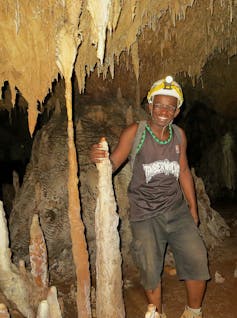
What was the climate doing at that time? One popular theory for the megafaunal extinction has blamed island-wide drying. To test this idea, our team has been exploring the caves of Madagascar, collecting and analyzing stalagmites. As stalagmites grow upwards from the cave floor, layer by layer, differences in the chemistry of each layer document changes in the climate outside the cave.
By analyzing chemical composition and comparing ratios of various isotopes in these stalagmites, we created new high-resolution records of changes in the Malagasy ecosystems and climate. We found minor fluctuations in the strength of the summer rains throughout the last 2,000 years, but no significant drying over that period. In fact, A.D. 780-960 was one of the wettest periods of the last 2,000 years. Chemical analyses of fossils back up this claim.
So it looks like there was no significant drying around the time the megafauna disappeared.
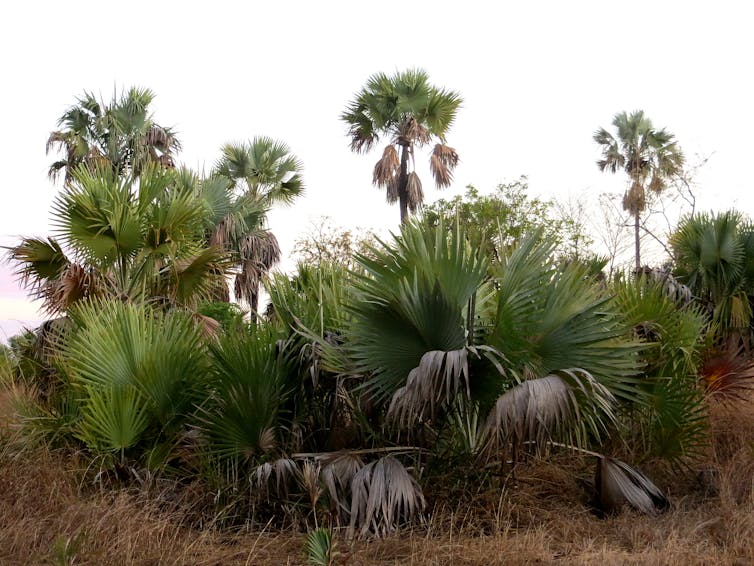
Instead, the stalagmite records indicated a rapid and dramatic change in the landscape. Changing ratios of the isotopes carbon-12 to carbon-13 reveal a switch from forests to grassland right around A.D. 900, the same time as the megafaunal population crash. Clearly something big happened around this time.
Cut marks and evidence of butchery
With no significant change in the climate, some point to the arrival of humans on the island as a possible cause of the megafauna population crash. It seems logical that once people arrived on Madagascar, they might have hunted the big animals into extinction. New data suggest that this timing doesn’t add up, though.
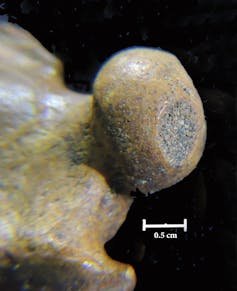
According to new dates on fossil bones with cut marks on them, humans arrived on Madagascar 10,500 years ago, much earlier than previously believed. But whoever these early people were, there’s no genetic evidence of them left on the island. New analysis of the human genetic diversity in modern Madagascar suggests the current population derives primarily from two waves of migration: first from Indonesia 3,000 to 2,000 years ago, and later from mainland Africa 1,500 years ago.
So it seems that people lived alongside the megafauna for thousands of years. How did the humans interact with the large animals?
Our new study found dozens of fossils with butchery marks. Cut and chop marks provide compelling evidence as to which species people were hunting and eating. Evidence of butchery of animals that are now extinct continues right up to the time of the megafaunal crash. Some people on Madagascar hunted and ate the megafauna for millennia without a population crash.
Evidence for a change in land use
If there was no obvious climate shift and humans lived alongside and sustainably hunted the megafauna for up to 9,000 years, what could have triggered the population crash?
The abrupt land use change might hold some clues. The transition from a forest-dominated ecosystem to a grassland-dominated ecosystem appears to be widespread. Scientists have identified this switch not only in the chemical signature of stalagmites but also in pollen grains buried in layers of mud at the bottom of lakes. Ancient lake sediments reveal two other changes occurred at the same time as the shift to grass species: an increase in charcoal from fires and an increase in the fungus Sporormiella, which is associated with the dung of large herbivores such as cows.
Evidence for simultaneous increases in grassland, fires, and cows and other domesticated animals points to a sudden change in Malagasy lifestyle: the introduction of cattle husbandry and slash-and-burn agriculture known locally as Tavy. Here, forests are cut down to make space for rice paddies, and grassland burned to promote the growth of nutritious seedlings for cow fodder.
This move away from foraging and hunting toward farming meant the land could support more people. The result was a rapid rise in the size of the human population – and that’s what we conclude spelled disaster for the megafauna.

Here lies the contradiction of the situation: Hunting megafauna for survival became less important as people could rely on their agriculture and livestock. But cut marks on fossil bones indicate that hunting didn’t altogether stop just because people had other food sources. It turns out that the impact on the megafauna of larger human populations hunting just to supplement their diet was greater than the impact of smaller human populations relying more heavily on the native animals as a vital food source.
Bringing together new data on land use changes, climatic histories, genetics, fossil ages and butchery of the megafauna, we call this change “the subsistence shift hypothesis.” Both the habitat loss and increase in human population arose out of a fundamental change in the way humans lived on Madagascar, from a more nomadic hunter-gatherer lifestyle to an agrarian society. We argue that it was this reorganization on Madagascar around A.D. 700-1000 that led to the crash in the megafaunal population.
Small populations of megafauna lived on in isolated pockets for another few centuries, but their fate was likely already sealed. The majority of the giant birds and animals that were once common across our planet have gone extinct. Many of the remaining giants, such as elephants and rhinos, are threatened or endangered. Will they go the same way as the Malagasy megafauna, casualties of humans’ changing lifestyles?
Nick Scroxton receives funding from the National Science Foundation.
Laurie Godfrey receives funding from the National Science Foundation BCS 1750598.
Stephen Burns receives funding from the US National Science Foundation (grant AGS‐1702891/1702691).
Read These Next
How the ‘slayer rule’ might play a role in determining who will inherit wealth from Rob Reiner and h
These rules have a long history in the United States. They played a role in the notorious murders by…
The celibate, dancing Shakers were once seen as a threat to society – 250 years later, they’re part
‘The Testament of Ann Lee,’ Mona Fastvold’s 2025 film, depicts part of the long history of Shaker…
From truce in the trenches to cocktails at the consulate: How Christmas diplomacy seeks to exploit s
World leaders like to talk up peace at Christmastime. But alongside the tales of seasonal breaks in…






